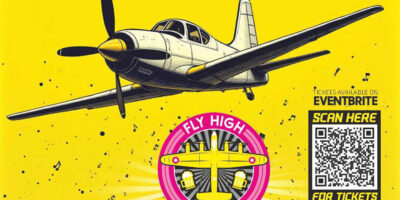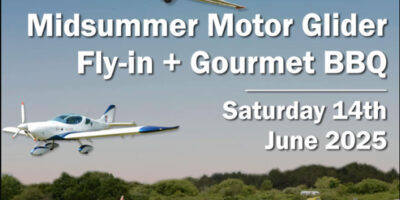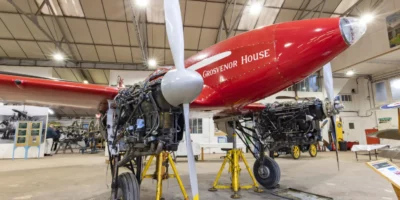When I unwrapped a helicopter trial lesson voucher on Christmas Day 2016, I never imagined that it would eventually lead to my flying around the warm Italian countryside in an exciting new ultralight helicopter preparing for this month’s article on the Curti Zefhir. What with that and the flying I’ve been doing in Cold War helicopters this month, it’s safe to say that getting my PPL(H) has taken me on a journey I never expected.
Rewinding back to March and my first flight in the iconic Westland Wasp. This was a flight with personal significance for me, as my dad had been given a go at flying a Wasp from on board ship in the Royal Navy in the 1980s, and I remember him relating this story when I first started learning to fly helicopters. He died very suddenly on Christmas Eve 2020, so I sadly didn’t get to share my own experiences of flying the Wasp with him. Instead, I’m sharing them with you… with some Scout flying for comparison.
I’ve never had to wear a flying suit for any of the flying I’ve done to date (notwithstanding the decidedly unflattering, Tellytubby-esque number I had to sport for the one flight I’ve done in a flexwing microlight), so donning one for flying the Wasp and Scout was an integral part of the experience.
The windscreen wipers were amusingly frantic, while there was a steady drop-drop-drop of water coming into the aircraft from a point somewhere in the ceiling
Lots of people on social media asked why flying suits are worn and why, unlike my instructor, Mark Cowley, I wasn’t wearing a flying helmet. Suits are worn because there’s oil absolutely everywhere on a vintage helicopter, and for warmth in the absence of a heater. Flying helmets aren’t a necessity, and in the end the practicalities of trying to get three headsets to work with each other in an old military helicopter meant we settled for whatever we could!
Three headsets, of course, because my friend Alex Bishop was with me for all the flying I did in the Wasp and Scout, and he went on to do the full type rating course (my budget, alas, not stretching that far at present). The great thing about having a flying friend is that not only do they take nice pictures of you flying, but you can enjoy a lot more time in the air than you would on your own.
Indeed, in addition to the half-hour apiece that I logged at the controls of the Wasp and Scout, I had a good two more hours sitting on the stretchers in the back while Alex had his turn – firstly for his half-hour in each, and then another hour sitting in on one of his type rating lessons (this being allowed because the Scout isn’t a Part NCO aircraft).
The Scout’s intercom currently only works between the two pilots, not in the back, so I wore ear defenders and simply imbibed the atmosphere, sounds and smells, responding to the occasional thumbs-up from Mark to check I was OK – and other inventive hand signals to inform me that autorotations were about to commence. Looking behind me, I could see the rotor head and tail rotor hard at work. I couldn’t believe how lucky I was just to be sitting in the back of this evocative machine that so few get to experience.
On our second sortie, our first in the Scout, we were afflicted by unexpectedly poor weather, and from my vantage point in the back I got a good understanding of how the Scout handles rain. The windscreen wipers were amusingly frantic, while there was a steady drop-drop-drop of water coming into the aircraft from a point somewhere in the ceiling. Just like the oil everywhere, Mark didn’t seem at all phased by this!
It was a very different story when I arrived in a hot and sunny Bologna for my flight in the immaculate new Zefhir. I’d had an arduous journey, with a 20-hour flight delay pushing my Zefhir experience into mid-evening, and the entire Curti flight team had graciously stayed late to make sure I could fly. And when, completely exhausted after 27 hours in transit, I walked out to the beautiful little helicopter I had seen on the ground a few weeks previously at Nottingham Heliport, I had severe doubts that I would be able to engage my rotary brain sufficiently to (a) fly it and (b) make intelligent enough observations about it that I would be able to relay my experiences to FLYER readers.
It felt surreal to be in Italy flying something brand new, with a glass cockpit and that ‘new aircraft’ smell – an entirely different kettle of fish from the old military helicopters, which I actually found easier to fly. I’d flown one of the five extant flying Wasps back in the UK, but this was one of only three Zefhirs made in the world so far.
The situation I found myself in was all the more unusual in that I was to be the first female pilot to fly the Zefhir. On the drive to the airfield from Bologna Airport, Mirco – Curti’s director of marketing – had told me that there are no female helicopter pilots in Italy. I can’t be certain that’s true, but it certainly made me feel something of a novelty. I also felt the pressure to do a decent job of flying it, so hopefully I didn’t let the side down!
So, this month has been a tale of not two but three turbines, which isn’t bad going considering that I don’t yet hold a turbine type rating.
I’ve promised myself a Jet Ranger rating in a couple of years, as a treat to look forward to when my student loan repayments finally come to an end. In the meantime, it’ll be back to the R44 – for all the turbine fun, still a no less exciting prospect than it was that Christmas Day six years ago.







